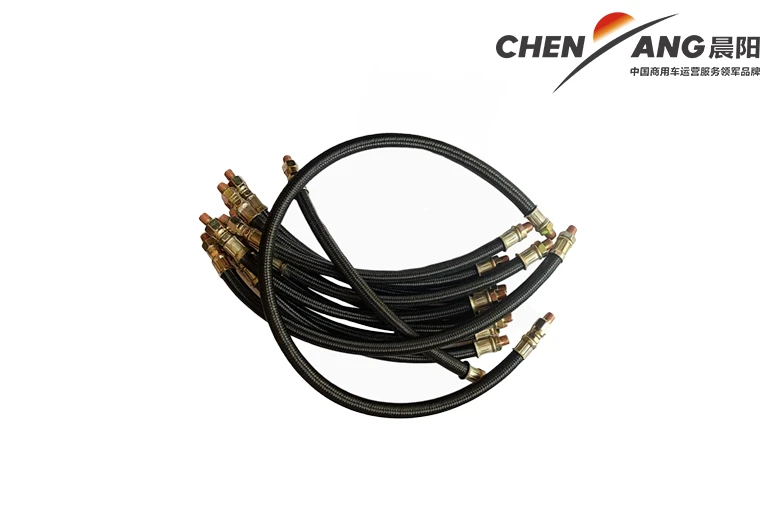Lightweight Carbon Fiber Tubing for Advanced Chassis Design and Performance Optimization
The Rise of Carbon Fiber Tube Chassis Revolutionizing Automotive Design
In recent years, the automotive industry has witnessed a significant shift towards lightweight materials to enhance vehicle performance, fuel efficiency, and overall driving experience. One of the most notable advancements in this area is the development of carbon fiber tube chassis. These innovative structures offer a myriad of benefits that traditional steel or aluminum chassis cannot match, making them increasingly popular among automotive manufacturers, especially in high-performance and luxury segments.
Understanding Carbon Fiber Tube Chassis
Carbon fiber is a lightweight, high-strength material made from thin strands of carbon atoms. When woven into a fabric and combined with a resin, it forms a composite that is both incredibly strong and remarkably light. A carbon fiber tube chassis is constructed using hollow tubes made from this composite material, providing a durable yet lightweight frame for vehicles. This type of chassis can be tailored to meet specific design and performance needs, making it highly versatile.
The Advantages of Carbon Fiber Tube Chassis
1. Weight Reduction One of the primary benefits of using carbon fiber is its exceptional strength-to-weight ratio. Carbon fiber tubes can be significantly lighter than their metal counterparts, reducing the overall weight of the vehicle. This reduction in weight leads to improved acceleration, better handling, and enhanced fuel efficiency.
2. Increased Strength and Durability Despite being lightweight, carbon fiber is incredibly strong. The tubular structure provides superior structural integrity, allowing for a high degree of rigidity and resistance to deformation. This strength can improve performance on the racetrack and enhance passenger safety in the event of an accident.
3. Design Flexibility Carbon fiber can be molded into complex shapes with ease. This flexibility allows engineers and designers to create unique chassis geometries that optimize vehicle dynamics and aesthetics. Unlike traditional materials that may be limited by manufacturing processes, carbon fiber allows for innovative designs that can enhance both performance and visual appeal.
4. Corrosion Resistance Carbon fiber is resistant to corrosion, significantly reducing maintenance requirements over the lifetime of the vehicle. Unlike steel, which can rust over time, carbon fiber’s resilience helps maintain the chassis's structural integrity, ensuring longevity and reliability.
carbon fiber tube chassis

5. Vibration Dampening Carbon fiber has natural vibration-dampening properties, which can contribute to a smoother ride. This characteristic is particularly beneficial in high-performance vehicles, where stability and comfort are paramount.
Applications in the Automotive Industry
The adoption of carbon fiber tube chassis has predominantly been seen in high-end sports cars, supercars, and some luxury vehicles. Brands like McLaren, Ferrari, and Lamborghini have incorporated this technology into their latest models to maximize performance. For instance, McLaren's P1 utilizes a carbon fiber monocoque chassis, showcasing the benefits of reduced weight and increased stiffness, which translates to improved handling and speed.
Additionally, the use of carbon fiber tubes is not limited to sports vehicles. Electric vehicle manufacturers are also starting to embrace this technology. The lightweight nature of carbon fiber helps enhance the range of electric vehicles by reducing the energy required for propulsion, thus addressing one of the major challenges in EV performance.
Challenges and Future Prospects
Despite the numerous advantages, the production of carbon fiber chassis does come with challenges. The manufacturing process can be more expensive and time-consuming compared to traditional materials. Furthermore, recycling carbon fiber poses difficulties, although ongoing research is aimed at developing sustainable practices.
Looking ahead, the future of carbon fiber tube chassis in the automotive industry appears bright. With advancements in manufacturing techniques and reductions in production costs, it is likely that we will see a wider adoption of carbon fiber technology across various vehicle segments. As manufacturers continue to innovate and prioritize performance, sustainability, and safety, the carbon fiber tube chassis will play a crucial role in shaping the next generation of vehicles.
In conclusion, the rise of carbon fiber tube chassis represents a significant turning point in automotive design. By providing a lightweight, strong, and versatile framework, carbon fiber tubes are transforming the way vehicles are engineered. As the automotive industry continues to evolve, the integration of such advanced materials will be essential for achieving higher performance standards, enhancing sustainability, and meeting the demands of modern drivers.
-
2BFY Traction Series Grain Fertilizer Seeder-Chenyang Group|Integrated Seeding&Fertilizing EfficiencyNewsAug.07,2025
-
2BFY Traction Series Grain Fertilizer Seeder - Chenyang Group|Precision Seeding & FertilizingNewsAug.06,2025
-
2BFY Traction Series Grain Fertilizer Seeder - Chenyang Group | Seeding and Fertilizing, Durable Agricultural MachineryNewsAug.06,2025
-
Sinotruk MAN Engine MC13.54-60 | Genuine 540HP AssemblyNewsAug.06,2025
-
2BFY Traction Series Grain Fertilizer Seeder-Chenyang Group|Seeding & Fertilizing Integration&High EfficiencyNewsAug.06,2025
-
2BFY Traction Series Grain Fertilizer Seeder - Chenyang Group | Integrated Seeding and FertilizingNewsAug.06,2025
Popular products

























